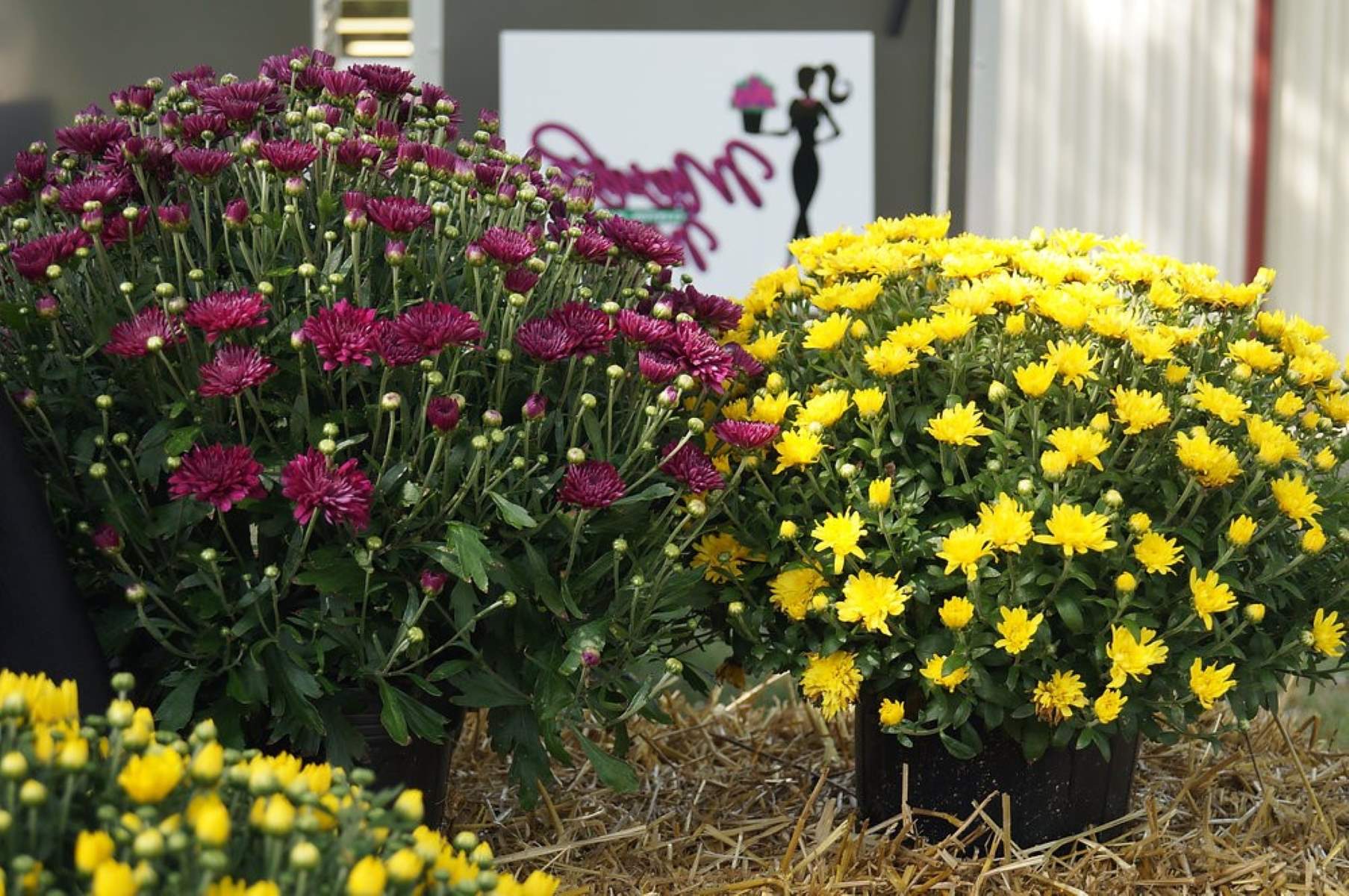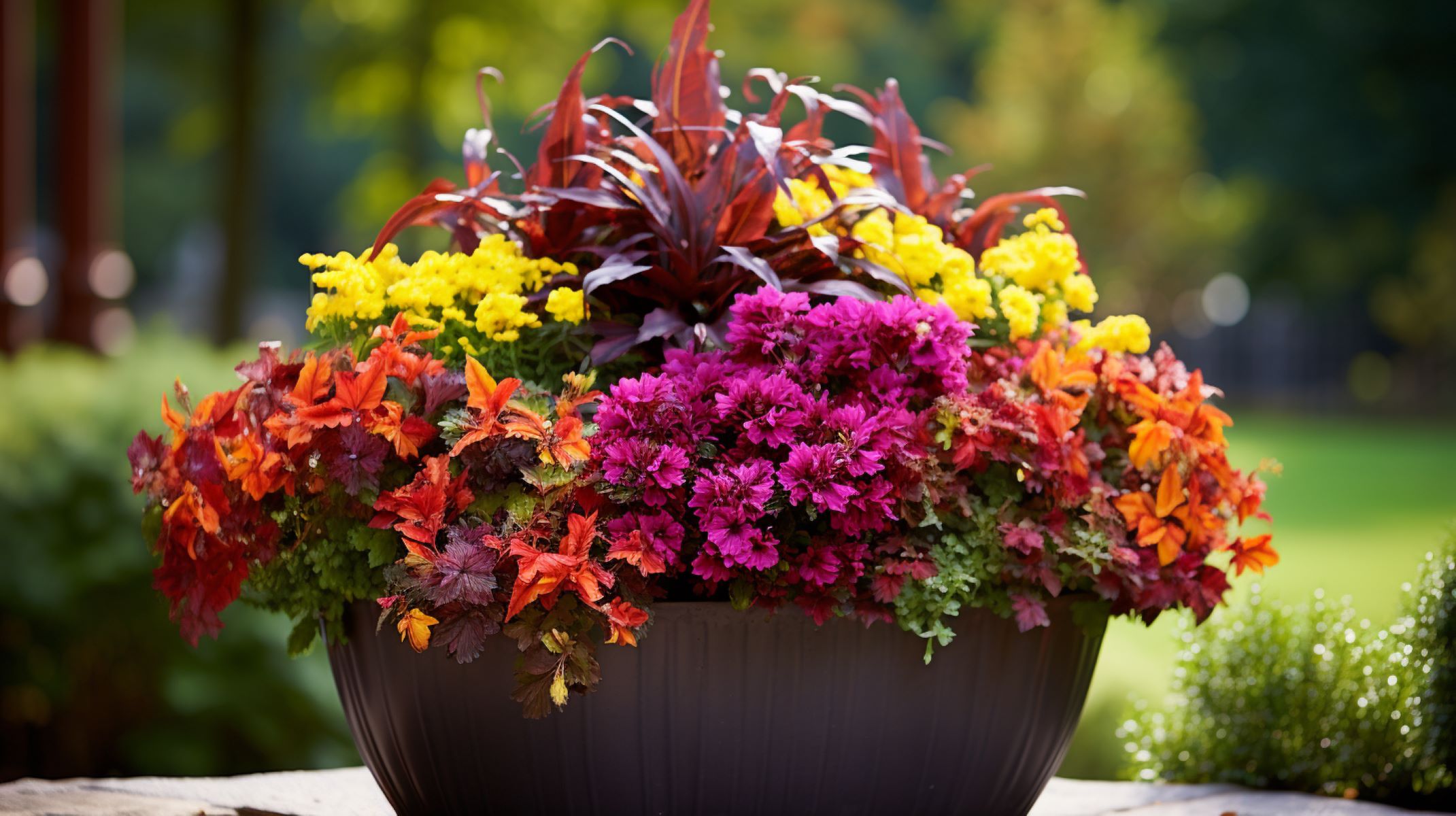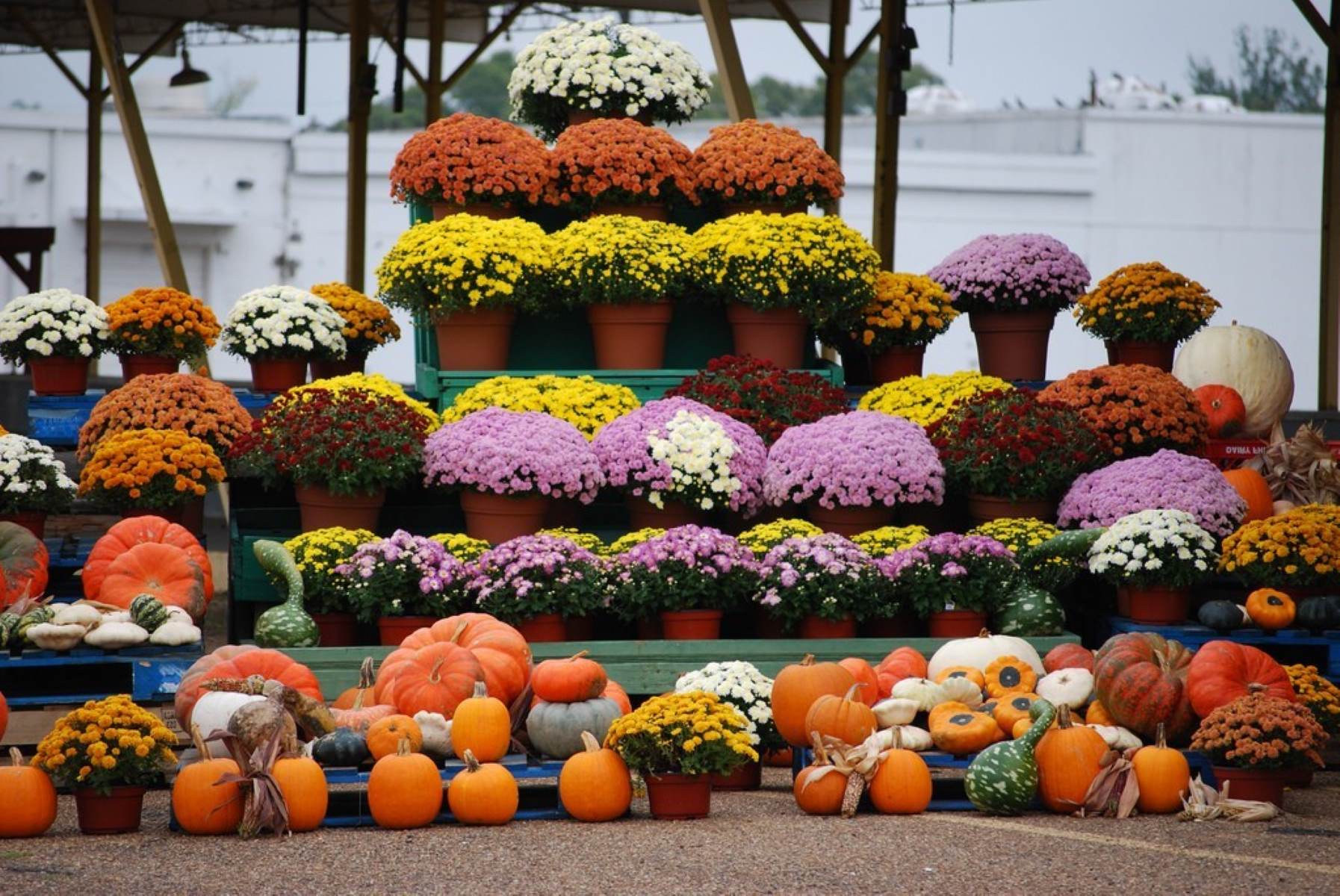Home>Gardening & Outdoor>Plant Care & Gardening Tips>What Do You Cover Mums With For Frost


Plant Care & Gardening Tips
What Do You Cover Mums With For Frost
Modified: August 27, 2024
Protect your mums from frost with these essential plant care and gardening tips. Learn how to keep your plants safe and healthy in cold weather.
(Many of the links in this article redirect to a specific reviewed product. Your purchase of these products through affiliate links helps to generate commission for Storables.com, at no extra cost. Learn more)
Understanding Frost and Its Impact on Mums
Frost, a natural occurrence during colder months, can have a significant impact on mums, also known as chrysanthemums. These beautiful flowering plants are vulnerable to the adverse effects of frost, which can hinder their growth and compromise their overall health. Understanding the implications of frost on mums is crucial for implementing effective protective measures to ensure their well-being.
When temperatures drop below freezing, frost forms on surfaces, including plants, as ice crystals. This phenomenon can be particularly detrimental to mums due to their susceptibility to cold temperatures. The formation of ice crystals on the delicate petals and leaves of mums can lead to cellular damage, inhibiting their ability to carry out essential biological processes.
Frost can disrupt the natural flow of fluids within the plant, causing cellular dehydration and ultimately leading to wilting and browning of the foliage. Additionally, the freezing temperatures can impede the plant's metabolic functions, hindering its capacity to absorb nutrients and undergo photosynthesis, which is vital for energy production.
Furthermore, repeated exposure to frost can weaken the structural integrity of mums, making them more susceptible to breakage and disease. The cumulative impact of frost on these plants can manifest in stunted growth, diminished flowering, and overall decline in vitality.
In light of these potential consequences, it is imperative for gardeners and plant enthusiasts to be proactive in safeguarding their mums against frost damage. By gaining a deeper understanding of how frost affects these plants, individuals can take informed steps to mitigate its impact and promote the resilience of their cherished mums.
Understanding the intricacies of frost and its implications for mums underscores the importance of implementing protective measures to shield these plants from the harsh effects of freezing temperatures. By recognizing the vulnerabilities of mums in the face of frost, individuals can cultivate a greater appreciation for the resilience of these plants and the significance of nurturing them through adverse weather conditions.
Key Takeaways:
- Protect mums from frost by using natural coverings like mulch and row covers, or artificial options such as frost blankets and heat lamps. These methods shield mums from freezing temperatures and preserve their delicate foliage.
- To safeguard mums from frost damage, monitor weather forecasts, adjust watering practices, and employ effective covering techniques. Identifying favorable microclimates and post-frost inspections also contribute to nurturing mums through challenging weather conditions.
Read more: When Do You Prune Mums
Natural Covering Options for Mums During Frost
When it comes to protecting mums from the detrimental effects of frost, natural covering options offer an effective and environmentally friendly approach. These methods leverage the inherent properties of natural materials to provide insulation and shield the plants from freezing temperatures. By employing these natural covering options, gardeners can safeguard their mums while minimizing the use of synthetic materials. Here are several natural covering options that can be utilized to protect mums during frost:
1. Mulch:
Mulching is a time-honored technique that offers multiple benefits, including insulation against frost. Applying a layer of organic mulch, such as straw, shredded leaves, or pine needles, around the base of mum plants helps regulate soil temperature and retain heat. This protective barrier minimizes the impact of frost on the roots and surrounding soil, preserving the plant's vital functions.
2. Row Covers:
Utilizing natural row covers, such as burlap or breathable fabric, can shield mums from frost while allowing air and moisture to permeate. These covers can be draped over the plants during periods of frost, providing a protective barrier without suffocating the foliage. The permeable nature of natural row covers ensures that mums receive adequate ventilation while being shielded from freezing temperatures.
3. Plant Blankets:
Natural plant blankets, crafted from materials like cotton or linen, offer a gentle yet effective means of safeguarding mums from frost. These breathable coverings can be draped over the plants during cold spells, providing insulation and protection without impeding the plants' access to light and air. Plant blankets offer a natural and sustainable solution for shielding mums from the adverse effects of frost.
Read more: What Do Mums Symbolize
4. Surrounding Plantings:
Strategic planting of frost-resistant companions, such as winter-blooming perennials or evergreen shrubs, can create a natural barrier that shields mums from the full impact of frost. These neighboring plants can help mitigate the effects of freezing temperatures by providing a degree of insulation and protection. Additionally, the collective presence of diverse plantings can contribute to a microclimate that buffers mums from the harshest effects of frost.
5. Natural Windbreaks:
Leveraging natural windbreaks, such as hedges or trellises, can help mitigate the impact of frost on mums by reducing exposure to chilling winds. These natural barriers serve to create a sheltered environment that minimizes the risk of frost damage. By strategically positioning mums in proximity to natural windbreaks, gardeners can enhance their resilience against freezing temperatures.
Incorporating these natural covering options into a comprehensive frost protection strategy can significantly bolster the resilience of mums and contribute to their overall well-being. By harnessing the inherent benefits of natural materials and environmental elements, gardeners can effectively safeguard their mums from the adverse effects of frost, nurturing these beloved plants through challenging weather conditions.
Artificial Covering Options for Mums During Frost
In addition to natural covering options, artificial methods can provide effective protection for mums during frost, offering a practical approach to safeguarding these plants from the detrimental effects of freezing temperatures. Artificial covering options leverage innovative materials and technologies to create a protective barrier that shields mums from frost damage. These methods are particularly valuable in regions where frost occurrences are prevalent, enabling gardeners to maintain the health and vitality of their mums. Here are several artificial covering options that can be employed to protect mums during frost:
1. Frost Blankets:
Artificial frost blankets, often made from polypropylene or other synthetic materials, are designed to provide insulation and protection for plants during cold spells. These specialized blankets can be draped over mums, creating a barrier that traps heat and shields the plants from freezing temperatures. Frost blankets are lightweight and durable, allowing for easy installation and removal as needed. Their thermal properties help maintain a stable microclimate around the mums, mitigating the impact of frost and preserving the plants' delicate foliage.
Read more: How Do You Keep Mums Alive
2. Plastic Tunnels:
Utilizing plastic tunnels, also known as cloches, offers an artificial covering option that effectively shields mums from frost while promoting a greenhouse-like environment. These transparent structures, typically made from durable plastic materials, can be placed over individual mum plants or rows of mums. The enclosed space created by the plastic tunnels traps heat from the sun, creating a warm and sheltered environment that safeguards the plants from freezing temperatures. Plastic tunnels are versatile and can be repositioned as needed to accommodate the growth of mums while providing ongoing protection from frost.
3. Heat Lamps:
Incorporating artificial heat sources, such as heat lamps, can provide targeted protection for mums during frost events. By strategically positioning heat lamps in the vicinity of mums, gardeners can elevate the ambient temperature, mitigating the impact of freezing conditions. Heat lamps are particularly beneficial during severe frosts, as they offer a supplemental heat source that helps prevent the formation of ice crystals on the plants' foliage. When used in conjunction with other covering options, heat lamps contribute to a comprehensive frost protection strategy that supports the resilience of mums.
4. Insulating Fabrics:
Artificial insulating fabrics, engineered to provide thermal protection, offer an effective covering option for mums during frost. These specialized fabrics, designed to retain heat and create a barrier against cold temperatures, can be draped over mums to safeguard them from frost damage. Insulating fabrics are lightweight and breathable, ensuring that the plants receive adequate ventilation while benefiting from enhanced thermal insulation. By harnessing the insulating properties of these artificial fabrics, gardeners can shield their mums from the adverse effects of frost, promoting their continued growth and vitality.
5. Portable Greenhouses:
Deploying portable greenhouses, also known as cold frames, presents an artificial covering option that delivers comprehensive protection for mums during frost. These compact structures, typically constructed with transparent panels and lightweight frames, create a controlled environment that shields mums from freezing temperatures. Portable greenhouses capture solar heat, creating a warm and sheltered space that fosters optimal growing conditions for the plants. Their portability allows for flexible placement, enabling gardeners to position the greenhouses strategically to safeguard mums from the impact of frost.
Incorporating these artificial covering options into a comprehensive frost protection strategy empowers gardeners to safeguard their mums from the adverse effects of freezing temperatures. By leveraging innovative materials and technologies, these artificial methods offer practical and effective solutions for nurturing mums through challenging weather conditions, ensuring their continued health and vibrancy.
Read more: What Do You Call A Covered Walkway
Tips for Protecting Mums from Frost Damage
Implementing proactive measures to shield mums from frost damage is essential for preserving their health and promoting robust growth. By integrating effective strategies and best practices, gardeners can mitigate the adverse effects of freezing temperatures and nurture their mums through challenging weather conditions. Here are valuable tips for protecting mums from frost damage:
-
Monitor Weather Forecasts: Stay informed about impending frost events by regularly monitoring weather forecasts. Awareness of anticipated temperature drops enables gardeners to prepare in advance and implement protective measures to safeguard mums from potential frost damage.
-
Watering Practices: Maintain appropriate watering practices to bolster the resilience of mums against frost. Well-hydrated plants are better equipped to withstand freezing temperatures, as adequate moisture levels contribute to cellular turgidity and reduce the risk of frost-induced dehydration.
-
Pruning and Deadheading: Prune and deadhead mums as the growing season progresses, removing spent blooms and excess foliage. This practice promotes air circulation and minimizes the accumulation of moisture on the plants, reducing the likelihood of frost-related issues.
-
Fertilization Timing: Adjust fertilization schedules to avoid promoting new growth close to the onset of frost-prone periods. Stimulating vigorous growth in mums just before frost can render them more susceptible to damage, so it's advisable to taper off fertilization as colder weather approaches.
-
Evening Watering: Refrain from watering mums in the evening, especially during periods when frost is anticipated. Damp foliage at night can increase the likelihood of frost damage, as the moisture on the plants may freeze when temperatures plummet.
-
Covering Techniques: Familiarize yourself with effective covering techniques, whether utilizing natural materials like mulch and row covers or employing artificial options such as frost blankets and plastic tunnels. Proper application of coverings can create a protective barrier that shields mums from the brunt of frost, preserving their delicate foliage and vital functions.
-
Microclimate Considerations: Identify areas in the garden that may offer a more favorable microclimate for mums during frost events. Sheltered locations, such as near buildings or under the canopy of larger plants, can provide a degree of protection from freezing temperatures, reducing the impact on mums.
-
Post-Frost Inspection: Following a frost event, conduct a thorough inspection of mums to assess any potential damage. Promptly address any affected areas by carefully removing damaged foliage and providing appropriate care to support the plants' recovery.
By incorporating these tips into a comprehensive frost protection strategy, gardeners can fortify the resilience of mums and nurture their continued well-being, ensuring that these beloved plants thrive despite the challenges posed by frosty conditions.
Frequently Asked Questions about What Do You Cover Mums With For Frost
Was this page helpful?
At Storables.com, we guarantee accurate and reliable information. Our content, validated by Expert Board Contributors, is crafted following stringent Editorial Policies. We're committed to providing you with well-researched, expert-backed insights for all your informational needs.













0 thoughts on “What Do You Cover Mums With For Frost”